
So, what has a dog musher got to do with climbing hardware? I shouldn't think there's anyone else who lives in the Arctic fulltime and uses Petzl (Lyon) equipment for nine months of the year in what amounts to the longest snow season for running sled dogs in the world. The cold is but one physical extreme for inanimate objects. For Man it is probably the most feared. Nobody likes being cold. This is what traveling at minus 50ºC looks like. Dress inappropriately and it feels what I imagine being burnt alive is like.
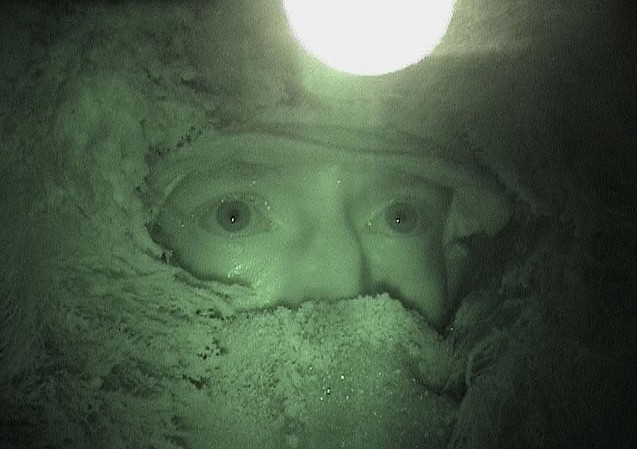
Arctic winters not only bring indescribable cold but also 24-hours of perpetual darkness. Where I live the sun never rises from November until January. This is a time when we are beset by the polar winter. Infamous Greenland storms are like no other. They are brutal. They are also rarely written about because so few people experience them. There are even fewer accounts of Arctic winter gear tolerances. A handful of climbers make it here during the brief summer. What about in the depths of winter? Never.
When it comes to headlamp technology and design, Petzl has raised the bar to incredible heights. Petzl has set the standard by which to judge what is the best available. Arctic dark can be so black it's like being nailed inside a coffin. The top picture is a video still shot over a decade ago. I was alone on the Mackenzie River in Arctic Canada's Northwest Territories. It was the middle of winter and bitterly cold. The headlamp was an old model from Petzl, a treasured and trusted belonging that helped me find my way and care for my dogs.
We had hurricanes last February and October (in Ittoqqortoormiit). In February my headlamp enabled me to rescue my own dogs and help other dog drivers in a dramatic dog rescue written about in the Sunday Times.
"Arctic dark can be so black it's
like being nailed inside a coffin."
The depth of Petzl's headlamp range has enabled me to task orientate specific models to suit what it is I want from them depending on the time of year or my routine. The same could be said of a climber selecting rope or making a carabiner choice by what confronts him.
Weight isn't a consideration at this time of year for me but having a headlamp that will deliver the maximum amount of light for the longest time certainly is. This winter I have been conditioning my adult dogs and training youngsters on runs from home using the Petzl Ultra Accu 2 or the belt version, the Ultra Belt Accu 4.
Converting the Ultra Accu 2 to the belt version is a cinch. Both battery packs are rechargeable and the energy gauge is a useful feature. The beam gives me the greatest range of peripheral vision but above all it produces the brightest and widest illuminated area of any headlamp I know of. It has to be the Rolls-Royce of headlamps.
I also like the way the Petzl Ultra illuminates the same distance with different intensities. For instance when working close to hand, even on the very darkest of winter days, the lowest setting is ample light to work by. On the move and having to anticipate some distance in front of my running dogs (20 metres) the full beam is so intense and clear it's like having a car headlight mounted on my head.
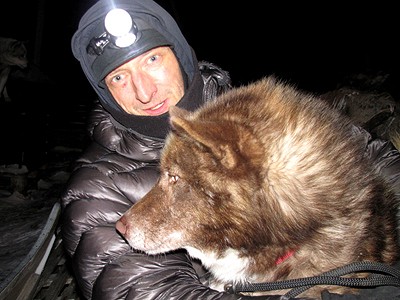
On longer dog runs I use the Ultra Accu 4 simply because the battery packs last longer. The battery cable remains flexible in the cold so you know a lot of design thought has gone into producing what amounts to a serious headlamp. I also really do like the ease of changing battery packs on this headlamp. Another thumbs up is that the variable light intensity side knob is easy to use with hands festooned with gloves or mittens.
But it is the Petzl Myo 3 headlamp that has been a journey favourite of mine for seven years now.
"I have 18 dogs and that means 72 pads of hair to thin and 288 claws to trim. Trimming pad fur is a tough job for bare hands and impossible in polar winter without a headlamp."
The Myo 3 has two light options. For working at close quarters with big, strong dogs going wild to run, harnessing them in the dark has to be done quickly. I want a bright, clean and precise light and get it from the three LED bulb light option. In the middle of work like this there is little worse than floppy headlamp tilt adjustment that will not stay in place. There is none of this with the Myo 3.
I have 18 dogs and that means 72 pads of hair to thin and 288 claws to trim. Why bother? Left unchecked, snow will ball up on pad fur between my dogs' toes on runs causing a dog to eventually go lame. Consider it comparable to running with rocks in your trainers. Trimming pad fur is a tough job for bare hands and impossible in the middle of a polar winter without a headlamp.
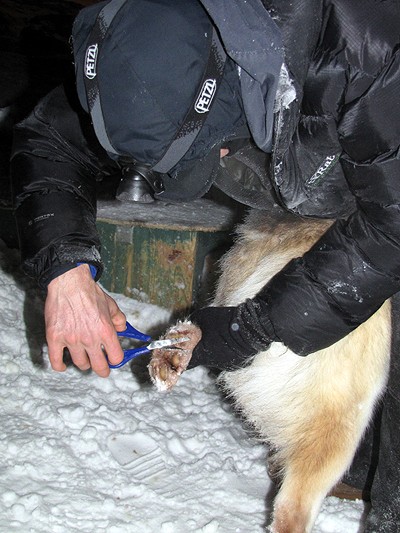
The Xenon halogen bulb setting is for concentrating on longer focused distance work. From my sled to front lead dog the distance can be over 20 metres. Running my dogs at night by the beam of my Myo 3 headlamp I watch my dogs' gait. I'm very attentive because the gait is a good indication that all is well or subtle changes indicate otherwise. Anything wrong they tend to drop their heads on the down stride of a sore leg, else they look behind to let me know all is not well. Or sometimes a tail will drop. Most of all I watch their feet. Unattended problems can render a dog lame.
Rotating the headlamp bezel is the only way the light can be turned on or off, a no hassle manoeuvre with hands bundled up inside mittens. There's none of that switching itself on nonsense to blaze away unnoticed at the bottom of my sled bag draining away critical battery power. The Myo 3 floods a helpful wide beam. I watch river, lake and sea ice conditions. I always look out for polar bears.
"With dustbin lid sized paws polar bears fear nothing and have a tendency to eat people. In poor light they appear yellow. In bright light they're perfectly camouflaged..."
With dustbin lid sized paws polar bears fear nothing and have a tendency to eat people. I look out for their kills and determine male footprints from protective sows with cubs. I also watch for stalking bears attacking from downwind. In poor light they appear yellow. In pitch black their eyes are a blue-ish green colour. In bright light they're perfectly camouflaged. Lone male polar bears never hibernate. They kill year round. Seeing springtime cubs I make a wide detour. Coming between a sow and cubs always gets mum mad. Charging bears tend to spoil my day.
At night it is my dogs that warn and pinpoint the approach of a polar bear into camp. Inside my tent and I hear my dogs' low “gruff...gruff...gruff” means only one thing and it is never to be ignored. The best headlamp in the world is what you want and with it my dogs' heads will all be pointing like arrowheads in the direction for me to take care of business.
A journey luxury I allow myself to pack is the little lightweight Petzl Tikka 2 CORE headlamp. I tend to use it inside my tent because the powerpack isn't at the back of the head like a rock when I lay stretched out on my sleeping bag system.
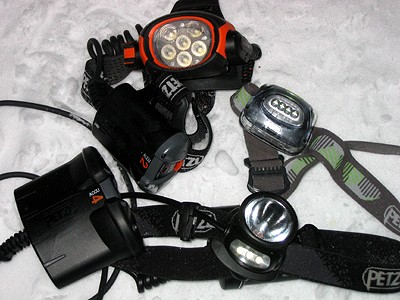
And what of summer headlamps? We get over 70 days of perpetual 24-hour summer daylight but I still pack a headlamp. Working as a polar bear monitor protecting field groups involves a lot of helicopter flying invariably to a wide range of locations and with it comes a great deal of serious responsibility for bringing pilots safely into a prepared landing site.
In mountainous regions this is best done signalling with a mirror. In cloudy conditions I reflect the beam of my headlamp on to my signal mirror, the pilot responds and safely lands.
When I run and train myself in summer there is no need for running using a headlamp. But as September daylight swiftly diminishes and winter sets in I do some of those early winter runs wearing my Petzl Tikka.
I can do all of this because I never have a dud headlamp.

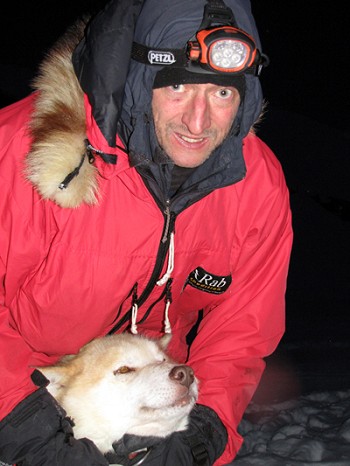

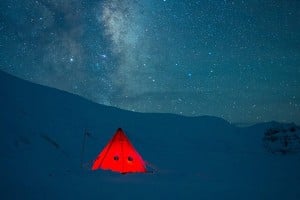
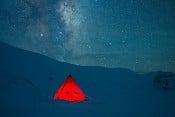
Comments